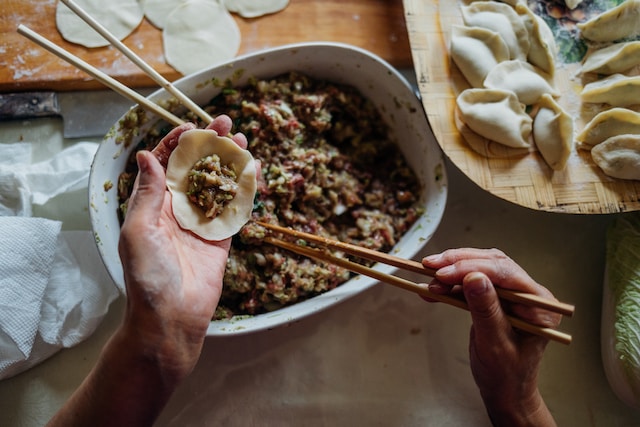
The art of Chinese cooking has captivated palates around the world, with its rich flavors, vibrant colors, and meticulous preparation. From the sizzling hot woks to the delicate knife skills, Chinese cuisine encompasses a myriad of cooking techniques that have stood the test of time.
At the heart of Chinese cooking lies the concept of harmony – the perfect balance between flavors, textures, and colors. Each cooking technique plays a crucial role in achieving this harmony, embodying the essence of Chinese culinary traditions that have been passed down through generations.
Stir-Frying: A Fiery Symphony of Flavors
The sizzle and aroma that emanates from a hot wok can only signal one thing – stir-frying, one of the most beloved cooking techniques in Chinese cuisine. Stir-frying combines high heat, quick cooking, and the skillful manipulation of ingredients, resulting in dishes that are bursting with flavor, color, and texture.
The Searing Heat
In stir-frying, the wok takes center stage. Its unique shape, with a wide surface and high sides, allows for even heat distribution and excellent heat retention. The wok’s curved edges enable ingredients to be expertly tossed and flipped, ensuring each morsel receives a kiss of the searing heat. This intense heat is the key to achieving the coveted wok hei, a taste that can only be attained through stir-frying.
The Dance of the Ingredients
Unlike other cooking methods, stir-frying relies on swift and precise movements. Ingredients are cut into uniform sizes, ensuring they cook at the same rate. The order in which they are added to the wok is vital, as each ingredient requires a different cooking time. The technique demands a masterful balance of timing and intuition to achieve a perfect harmony of flavors and textures.
The Flavor Amplifiers
To elevate the flavors of stir-fried dishes, a myriad of fragrant sauces and seasonings are employed. Soy sauce, oyster sauce, and hoisin sauce, among others, bring depth and complexity to the dish, while garlic, ginger, and chili peppers provide a spicy, aromatic kick. These flavor enhancers, when added at the right moment during stir-frying, coat the ingredients evenly, infusing each bite with a burst of delectable flavors.
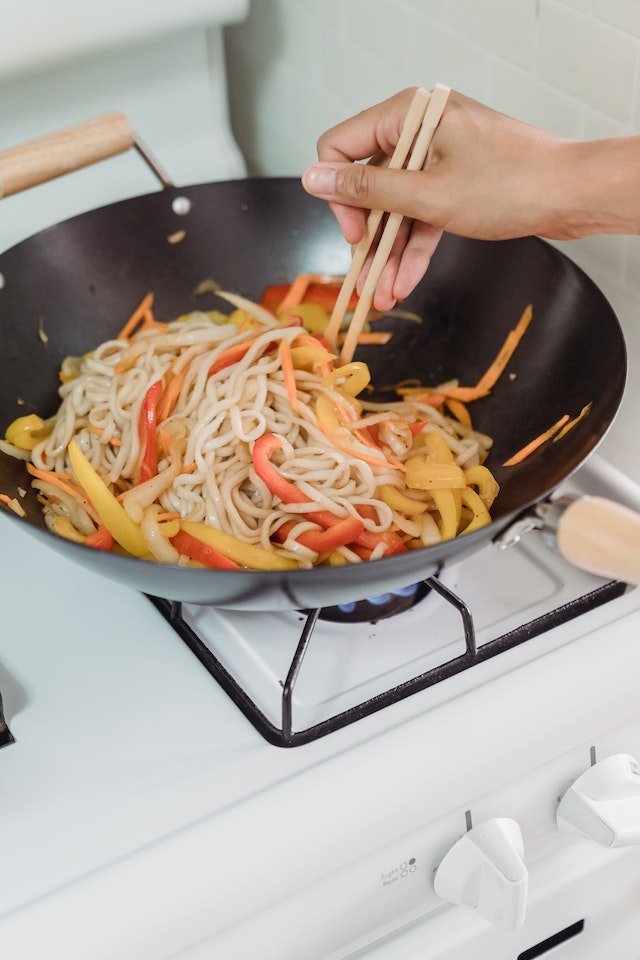
The Medley of Textures
Stir-frying is renowned for its ability to preserve the natural textures of ingredients. Vegetables retain their vibrant colors and crispness, while proteins – whether it be succulent shrimp or tender strips of beef – remain juicy and tender. The quick cooking process ensures that the ingredients maintain their integrity, creating a delightful medley of textures within each dish.
Cooking Techniques in Chinese Cuisine
The art of Chinese cooking transcends the boundaries of taste and takes on the form of a symphony for the senses. From the vibrant stir-frying to the delicate steaming, Chinese cuisine embraces a multitude of cooking techniques that transport us to a world of unparalleled flavors and aromas.
Embracing the Steam
Steaming, often considered the epitome of healthy cooking, showcases the importance of gentle heat and minimal interference in Chinese cuisine. Unlike other cooking techniques, steaming allows the ingredients to retain their natural flavors and textures, while also unlocking depths of flavor that might otherwise remain hidden. With a little patience and the right equipment, one can create dishes that are as delicate as a whisper and as flavorful as a sonnet.
Steaming in Chinese cuisine is often conducted using bamboo steamers, which have been used for centuries. These steamers allow for efficient steam circulation, resulting in even cooking and enhanced flavors. The natural fibers of bamboo impart their own aroma to the food, enhancing its fragrance and lending it a unique taste.
The Symphony of Ingredients
The choice of ingredients is vital to achieving a harmonious dish. Whether it’s fresh vegetables, succulent seafood, or tender cuts of meat, the ingredients must harmonize both in flavor and texture. Traditional pairings such as fish with ginger and scallions, or chicken with mushrooms and Chinese sausage, create a symphony of tastes that blend together effortlessly.
Timing is Key
In the art of steaming, timing is everything. Each ingredient requires a specific duration to transform into a masterpiece. Whether it’s the precise time to cook a fish to tender perfection or the art of steaming dumplings until the wrappers become translucent, it is a dance of patience and mastery. The subtle changes in textures indicate when the dish has reached its peak, and years of experience allow for this precise intuition.
Layers of Flavors
Steaming is not just about the gentle cooking process; it is also an opportunity to infuse the ingredients with extra layers of flavor. Marinating the proteins before steaming imparts an additional dimension, while adding aromatics like ginger, garlic, and spring onions to the steaming liquid elevates the dish to new heights. Once the steam rises, it carries with it the tantalizing scent of these fragrant additions, enhancing the final masterpiece.
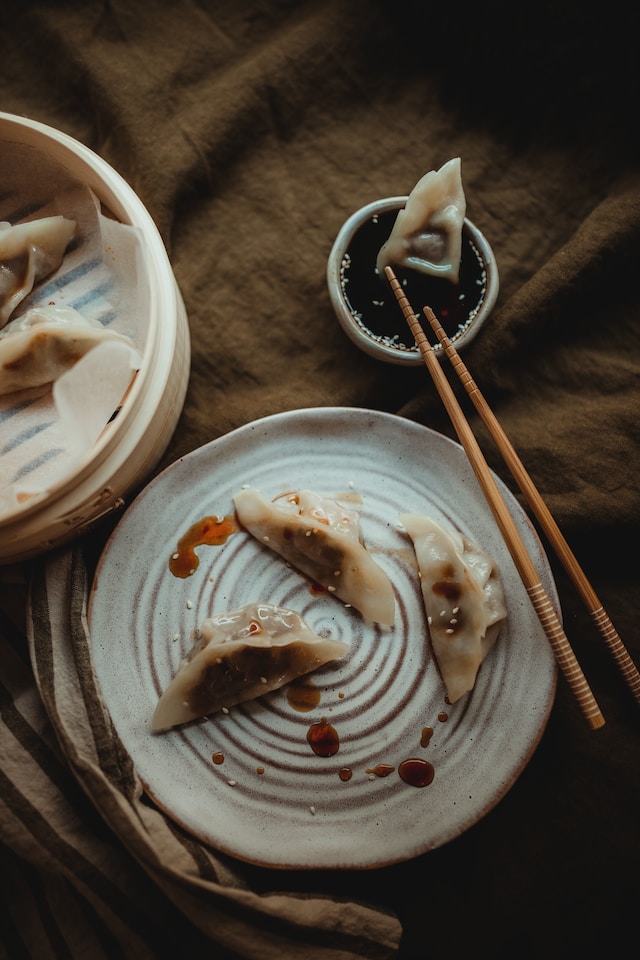
Deep-frying
Deep-frying is a beloved cooking technique in Chinese cuisine that combines heat, oil, and skill to create dishes that are crispy on the outside and tender on the inside. From golden-brown spring rolls to mouthwatering sweet and sour chicken, deep-frying adds a delightful crunch and flavorful texture to a plethora of Chinese dishes.
This cooking technique involves immersing food in hot oil, allowing the high temperature to cook the ingredients quickly while forming a crispy exterior. The correct oil temperature is crucial to achieving the desired results, ensuring that the food cooks evenly without becoming greasy or burned. The science behind deep-frying lies in the delicate balance between the oil temperature, cooking time, and the moisture content of the ingredients.
- Choosing the Right Oil
Selecting the right oil is essential for achieving the perfect deep-fried dish. In Chinese cooking, peanut oil is often the oil of choice due to its high smoke point and neutral flavor. This versatile oil allows the ingredients to develop their own taste without overpowering other flavors. Other commonly used oils for deep-frying in Chinese cuisine include vegetable oil and canola oil.
- Mastering the Technique: From Battering to Frying
Deep-frying involves a series of steps, from preparing the batter to frying the ingredients to crispy perfection. To create a light and crispy coating, a batter is often used, made from a mixture of flour, cornstarch, and seasonings. The ingredients are then dipped into the batter and carefully lowered into the hot oil, ensuring they are fully submerged for even cooking. The proper frying technique, including maintaining a consistent oil temperature and flipping the ingredients when needed, is crucial to achieving a uniform golden-brown color and optimal texture.
- Oil Absorption and Drainage
To ensure that deep-fried dishes are not greasy, proper oil absorption and drainage are key factors. By maintaining the correct oil temperature, the ingredients will form a protective crust that seals in the moisture, preventing excessive oil absorption.
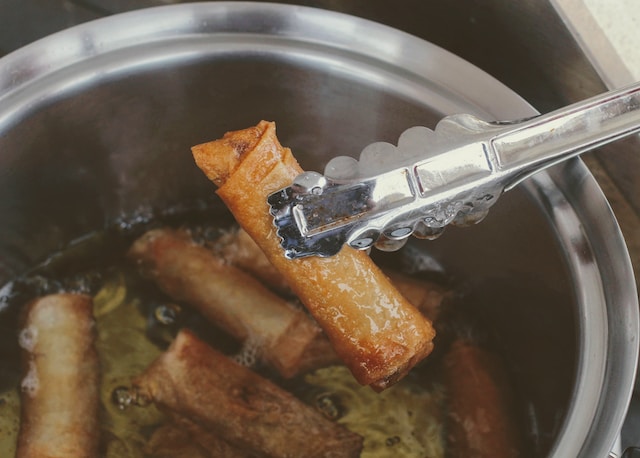
Proper drainage is then essential to remove any excess oil, often achieved by placing the deep-fried ingredients on a wire rack or paper towel to allow the oil to drip away.
- Dipping Sauces and Garnishes
Deep-fried dishes in Chinese cuisine are often accompanied by dipping sauces and garnishes that add an extra layer of flavor and balance. Sweet and sour sauce, soy-based sauces, and chili oil are popular choices to complement the rich and crispy texture. Garnishes such as scallions, cilantro, or sesame seeds provide a fresh and aromatic touch, adding visual appeal and enhancing the overall dining experience.
Braising
Braising, a beloved cooking technique in Chinese cuisine, takes ingredients on a slow and tender journey, unlocking layers of flavor and transforming ordinary dishes into culinary masterpieces. This method of cooking combines the elements of gentle heat, moisture, and time, simmering ingredients until they become tender, succulent, and infused with a rich sauce. Let us delve into the art of braising and discover the secrets behind this exquisite technique.
The Low and Slow Approach

Braising involves the process of cooking ingredients in a closed container, such as a pot or a wok, with a small amount of liquid. The gentle simmering heat allows flavors to meld together harmoniously, resulting in dishes that are not only tender but also packed with concentrated flavors.
The Symphony of Ingredients
Braising offers endless possibilities, allowing a wide variety of ingredients to shine. From tender cuts of meat, such as pork belly or beef brisket, to hearty vegetables like daikon radish or bamboo shoots, each ingredient has its moment to take center stage in a braised masterpiece. The key is to choose ingredients that will complement each other, creating a symphony of flavors and textures.
The liquid used during the braising process plays a pivotal role in infusing the ingredients with flavor. Broths, stocks, or even wine can be used as the base, providing a foundation of taste that will develop over time. Soy sauce, aromatic spices like star anise or cinnamon, and sweeteners such as rock sugar or honey can be added to the liquid, creating a robust and well-balanced braising sauce.
The Time Factor
Braising is a patient affair, requiring ingredients to simmer for an extended period to achieve the desired tenderness and depth of flavors. The slow cooking process allows the collagen in meat to break down into gelatin, resulting in melt-in-your-mouth textures that are characteristic of a well-braised dish. It is during this time that the ingredients truly meld together, creating a harmonious symphony of flavors.
Braising sauces are often thickened to create a velvety and luscious texture. Cornstarch or flour can be used to thicken the sauce, transforming it into a glossy coat that clings to the ingredients, amplifying their flavors. As the sauce thickens, it intensifies, creating a luxurious and indulgent experience for the palate.
The Finishing Touch
Once the braising process is complete, the ingredients are tender, infused with flavors, and immersed in a luscious sauce. To elevate the dish further, garnishes such as scallions, cilantro, or toasted sesame seeds can be scattered on top, providing a burst of freshness and adding a visual appeal.
Exploring the Art of Fermentation in Chinese Cuisine
In the world of Chinese cuisine, fermentation takes center stage as a transformative process that elevates simple ingredients into complex and flavorful delights. Through the power of beneficial microbes, fermentation creates a symphony of tastes, aromas, and textures that have been celebrated for centuries.
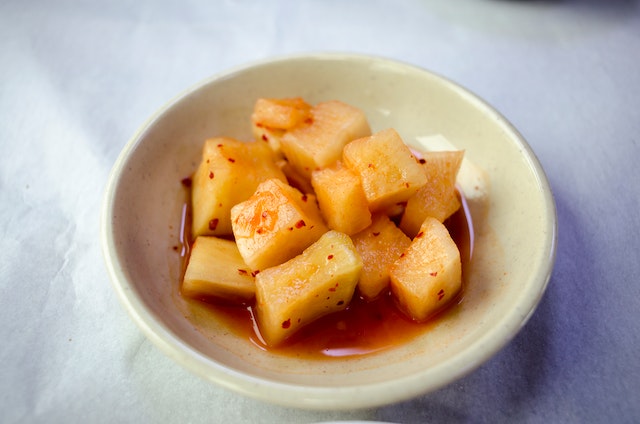
- Understanding the Fermentation Process
Fermentation relies on the action of living organisms, including bacteria and yeast, to break down sugars and transform them into new compounds. Lactic acid bacteria, such as lactobacillus, and yeast species like Saccharomyces cerevisiae, play crucial roles in Chinese fermentation techniques.
During fermentation, microorganisms consume sugars, releasing enzymes and metabolites that work together to create complex flavors, aromas, and textures. Substances like acetic acid, lactic acid, and alcohol are produced, contributing to the unique characteristics of fermented foods.
- Preserving Vegetables
Pickling vegetables in Chinese cuisine involves submerging them in a brine solution, often containing salt, vinegar, and aromatic spices. The process not only preserves the vegetables but also imparts a delightful sour and tangy flavor.
- Salted Vegetables and Soybean Paste
Salted vegetables, such as mustard greens or radish, undergo a fermentation process that enhances their umami flavors and creates a pleasingly crunchy texture. Soybean paste, known as doubanjiang or fermented bean paste, is made by fermenting soybeans with salt and chili peppers. It serves as a fundamental ingredient in many iconic Chinese dishes.
- The Secrets of Soy Sauce
Soy sauce is a culinary pillar in Chinese cuisine, adding depth and complexity to a wide range of dishes. The process of making soy sauce involves fermenting a mixture of soybeans, wheat, salt, and water over a period of months or even years.
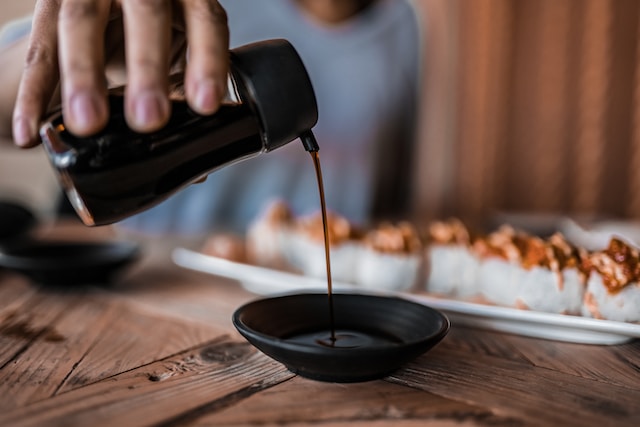
During fermentation, the enzymes and microorganisms gradually break down proteins and carbohydrates, resulting in the formation of unique flavors and aromatic compounds. The length of the aging process determines the characteristics of the soy sauce, from the lighter and sweeter flavor of young soy sauce to the robust and savory taste of aged soy sauce.
- The Delights of Rice Wine
Rice wine is a staple in Chinese cooking, bringing a delicate sweetness and depth of flavor to dishes. Made from fermented glutinous rice, this traditional spirit undergoes a fermentation process that transforms the sugars into alcohol.
Rice wine vinegar, a byproduct of the fermentation process, possesses a tangy and mellow flavor that adds a delightful touch to dressings, marinades, and dipping sauces. Its subtle acidity complements a myriad of dishes, enhancing their overall taste profile.
The art of Chinese cooking is an intricate dance of techniques, flavors, and textures, it’s a testament to the creativity and skill of its masterful chefs. Each cooking technique brings its own unique qualities to the table, resulting in dishes that captivate the senses and transport us to a world of unparalleled flavors and aromas. Embracing the balance of ingredients, the art of Chinese cooking continues to inspire and delight, reminding us that food is not just sustenance but a profound experience that nourishes both body and soul.
